As of two years ago, some fifty cartons bulging with colored plastic folders placed in an old metal office cabinet at Beit Ariela, Tel Aviv’s municipal library, lay waiting for someone to notice them. This is part of the legacy of Heinrich Loewe, a pioneering German Zionist who envisaged a national Jewish library in Jerusalem already in the late nineteenth century, and who actively promoted the idea ever since the seventh Zionist Congress held in 1905.
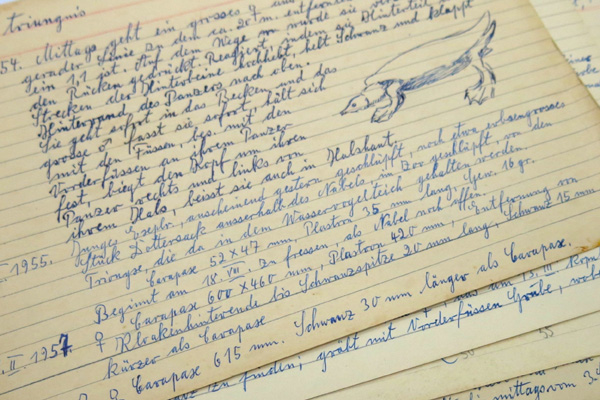
Commissioned by Meir Dizengoff, the Mayor of Tel Aviv, to head the municipal library Sha’ar Zion in 1933, which he did with devotion until retiring in 1948, Loewe would surely have been horrified to witness the sorry state of his papers. As a librarian trained at the library of Berlin’s Friedrich Wilhelm University, where he worked from 1898 up to his dismissal in 1933 against the backdrop of the race laws, or as they were euphemistically called by the Nazis “the law for the restoration of a professional civil service,” and having trained librarians in Palestine following his migration, one doubts if he would have deemed the maintenance of his legacy to comply with the professional standards he acquired and instilled during the course of his long life.
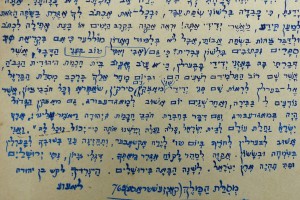
Loewe’s legacy is not “orphaned” or “homeless,” two of the many images prevalent in the contemporary discourse on the proper or appropriate place for literary and scientific legacies, a debate that reflects a growing awareness of the material essence of culture and consequently of the territorial location of its products. Lodged between the ostensibly universal claims in favor of cultural products and their optimum conservation and what is frequently and somewhat sarcastically referred to as “cultural nationalism,” namely the furthering of ostensibly narrow particular interests that prioritize ownership at all cost, even at the cost of poor maintenance and preservation, one might maintain that Loewe’s legacy is truly at home. It is kept in the library that he administered for 15 years, in a country that granted him sanctuary after he migrated to it upon being thrown out of the German civil service and at the heart of the Hebrew speaking city, a language that he had sought, along with others, to revive, albeit without great success, in his student days in Berlin, influenced by Russian Jewish students that he met during his studies, including Chaim Weizmann, Zalman Shazar and Leo Motzkin. But why, we may ask, was the legacy left to rest in the metal cabinet and neglected therein? Apart from prosaic yet relevant reasons, materialistic considerations, the lack of budget, order of priorities and so forth, it would appear that the condition of the legacy stems from the historical circumstances of its transfer from Berlin to Tel Aviv; in other words, it is bound up with the fate of Loewe and his ilk.
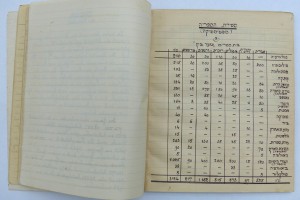
A prevalent play on words in 1930s Palestine differentiated between those who came from Germany and those who arrived from “Zionism.” This sarcastic distinction, which contains a measure of self-righteousness and humor at another’s expense, was generally aimed by people from eastern Europe at those who had immigrated from Germany in the wake of Hitler’s rise to power. It pointed a finger at the migrants of the 1930s, the people of the fifth aliya, casting them as migrants of distress, as people who were not driven by belief or by ideological conviction to come to Palestine, but who had done so only once all hope was lost, thereby detracting a little from their rights. Yet, as in this case, reality generally does not conform to dichotomous distinctions: Loewe, for instance, came from both Germany and Zionism as did many others whose legacies we have made accessible and will continue to do so in the coming years – within the framework of the collaborative project of the Franz Rosenzweig Minerva Research Center at the Hebrew University of Jerusalem and the Deutsches Literaturarchiv Marbach. Loewe was an ardent Zionist from the very inception of the movement, and was deeply involved in dozens of its cultural enterprises, many of which are documented in his legacy alongside ethnographical studies that he conducted. He planned to migrate to Palestine at the end of World War I, but in the end did not do so. Aliya to the Land of Israel was part of the “spiritual Zionism” that he championed, but was not necessarily an imperative. This brand of Zionism envisaged “Zion” as a spiritual center that would reach out to the Jewish centers of the Diaspora, yet would not necessarily constitute the exclusive form of modern Jewish existence. Loewe the cultural Zionist was thus both a migrant and a refugee, and perhaps his legacy has retained these attributes.
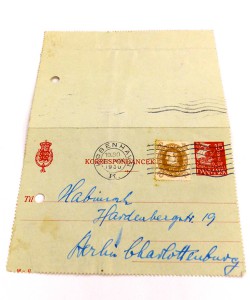
Some two-thirds of Loewe’s legacy is in the German language, which corresponds to the ratio of the number of years of his professional life in Berlin to the number of years he spent in Tel Aviv. This statistic, however, reflects a far broader phenomenon, namely the weighty role played by the German language in the process of the evolution of modern Jewish culture. It is extremely tempting to make the exaggerated claim that Jewish modernity, and in many ways also Hebrew modernity, developed in German or alternatively in Germany. One of numerous examples, if not proofs of this, is the administrative archive of Habima – Israel’s national theater – during the first decade and a half of its existence. As part of the project, we classified and catalogued the core of this archive, which is kept at the Israeli Center for Documentation of the Performing Arts. Why, we may ask, is a considerable part of the papers in this archive written in German, given that the theater was founded in Moscow in 1917, and from its inception performed solely in the Hebrew language? Because Weimar Berlin, capital of European theater during the initial third of the twentieth century, was the city in which Habima was enthusiastically welcomed when it repeatedly visited there between 1926 and 1931. It was there that Habima shaped its professional profile and evolved from being just one of a number of eastern-European Jewish theater troupes that frequented the city to become a genuinely modernistic repertory theater. It is doubtful whether this development would have occurred had it not been for the intellectual and material support and the diverse web of connections among the local Jewish cultural elite in the city, and for key figures such as Margot Klausner in particular, who devoted their time and wealth to the cause. Neither can this archive, which migrated to Palestine along with Margot Klausner, be said to be “without a home.” As the administrative archive of Israel’s national theater its proper place is at the Israeli Center for Documentation of the Performing Arts. Yet its German language content has, rather paradoxically, turned it into a foreign body within its own home, which is naturally primarily engaged in the documentation of Israeli, namely Hebrew language theater.It is well known that the German language was shunned in Israel for many decades. In the 1930s the Jewish immigrants from Germany were expected to learn Hebrew; in the 1940s, during the war years, this expectation became a demand that on occasion acquired a truly violent dimension. In February 1943, for example, the Lichtheim Press, which printed the issues of the Orient, a journal edited by the expatriate Arnold Zweig, as well as other works that emanated from the circle of German culture in conjunction with a handful of Jewish Communists, was set on fire. This violence was in all probability directed not only at the German language, but also at the political views of the writers and their nostalgia for Europe, which was perceived to threaten the local national enterprise. Yet the conditions and prospects of German literature in the Palestine diaspora were generally circumscribed, and several of its prominent figures indeed left the country after the war and returned to Europe.
The status of the German scientific heritage in Israel is very different. Both the Technion, which began to function in 1924, and the Hebrew University in Jerusalem, whose formal inauguration took place in 1925, were the direct products of the German scientific tradition. It is true that, in response to the political developments in Germany, the teaching of German at the Hebrew University was formally discontinued in the 1930s, and was partially reinstated only some twenty years later in the wake of a persistent struggle in the face of public opposition. At the same time the university made great efforts during the 1930s to absorb German scientists such as Martin Buber, Richard Koebner and Gotthold Weil, a step that subsequently proved to be instrumental in their rescue. The university thus not only remained essentially German during the 1930s, but even reinforced these influences; until 1948, for example, the proportion of those who hailed from German universities among the university’s tenured staff members reached approximately one half. If, when we commenced the project, we believed that we would focus on literary collections, we discovered that a significant realm of the German-Jewish scientific legacy in Israel was not yet visible in its full scope for international research. Our principal efforts are devoted to scholars’ estates, and are oriented toward fostering and deepening awareness of the German and Jewish-German heritage within Israeli science.
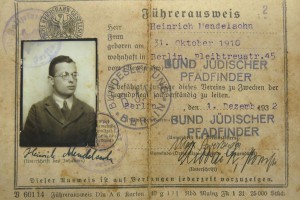
One such example is the estate of the zoologist Professor Heinrich Mendelssohn, born in 1910. As did Loewe, Mendelssohn arrived in the country in 1933, likewise having studied at the Berlin University, although at his time it was no longer called the Friedrich Wilhelm University, but Humboldt University. Mendelssohn became aware of his Jewish identity only at the age of ten. Subsequently he apparently adopted a Zionist outlook and joined the Zionist Blau Weiss youth movement. Its nature outings constituted a major inspiration for his later development. Although he viewed the concept of “love of the land” with disdain, Mendelssohn’s “love of nature” evolved in Germany and blossomed in Palestine. It acquired professional expression in his zoology studies, which commenced in Berlin and culminated under the supervision of Shimon Fritz Bodenheimer at the Hebrew University in Jerusalem. From this point onward he enjoyed considerable success: he was appointed the first professor of zoology at Tel Aviv University, where he later served as Dean of the Faculty of Natural Sciences and Vice-President of the university. Until recently, the 70 cartons of Mendelssohn’s scientific estate lay undisturbed in Tel Aviv University’s historical archive. Apart from the curiosity that a colorful personality such as Mendelssohn’s arouses, the importance of the estate lies in his status as someone who instilled a deep respect for ecology among generations of students of the natural sciences in Israel.
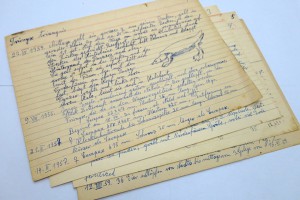
Alongside his scientific activity, Mendelssohn initiated the founding of the Israel Nature Preservation Society in the early 1950s, as well as the legislation that led to the founding of the Nature Reserves Authority in the mid-1960s. His estate is therefore a rich source for the study of the German roots of the development of the study and conservation of the environment in Israel. The priority that Mendelssohn accorded to the preservation of nature above all other considerations, be these cultural, historical or national, could perhaps serve as evidence of remnants of the Wilhelminian environmental tradition that strove to preserve the environment for scientific reasons, which Mendelssohn brought with him to Palestine, whereas in Germany itself it lost its prominent position. Should this premise prove to be true, the study of Mendelssohn’s estate in Tel Aviv may well contribute to the study of the development of the environmental movement in Germany, or at least constitute a test case within contra-factual history, namely history that did not occur.
Nothing can equal the estates of the Jewish Orientalists of German origin in relating a chapter of “history that did not occur.” Some have been accorded a place of honor in the National Library, the splendid central Israeli institution that houses a wide range of collections and estates that constitute the heart of German – Jewish history and culture. Our contribution in these cases is therefore modest and limited, and consists primarily in the classification and cataloging of sections of estates that have recently been found, for the sake of completing the historical picture. Whether it was Shlomo Dov Goitein, who immigrated in 1923 or Gotthold Weil and Martin Plessner, who arrived in 1933 after losing their positions in Germany, they were the product of a tradition that exiled from Germany in the wake of the imposition of racist standards of science under the Nazi regime and the dismissal of the Jewish scholars. True to philological tradition, to liberal values and to scholarship for its own sake, they instilled a love of Arabic and a love of Islam in generations of their students amid the reality of a growing and enduring national dispute that stridently called for a different type of Orientalism. In this respect, their story, like that of the conflict, remains a tragic one, yet it has the power to illuminate the surprising contemporary relevance of papers that are yellowing at their edges.
Yfaat Weiss is Professor at the Department of the History of the Jewish People and Contemporary Jewry of the Hebrew University in Jerusalem. Since October 2010 she is the Director of the Franz Rosenzweig Minerva Research Center for German-Jewish Literature and Cultural History in Jerusalem. In association with the German Literature Archive Marbach, the center is carrying out a project, funded by the German Federal Foreign Office, on the topic of preserving and exploring German-Jewish collections in Israeli archives. From September 2014 to January 2015, she was a EURIAS Senior Visiting Fellow at the IWM .
This article is based on a lecture given at the conference “Celebrating 50 Years of German-Israeli Diplomatic Relations” on Febraury 11 at the Weizmann Institute of Science in Rehovot, Israel.